PORT visits the Finnish capital to discover Helsinki’s lesser known architectural gems and design highlights shaped by the city’s favourite son, Alvar Aalto
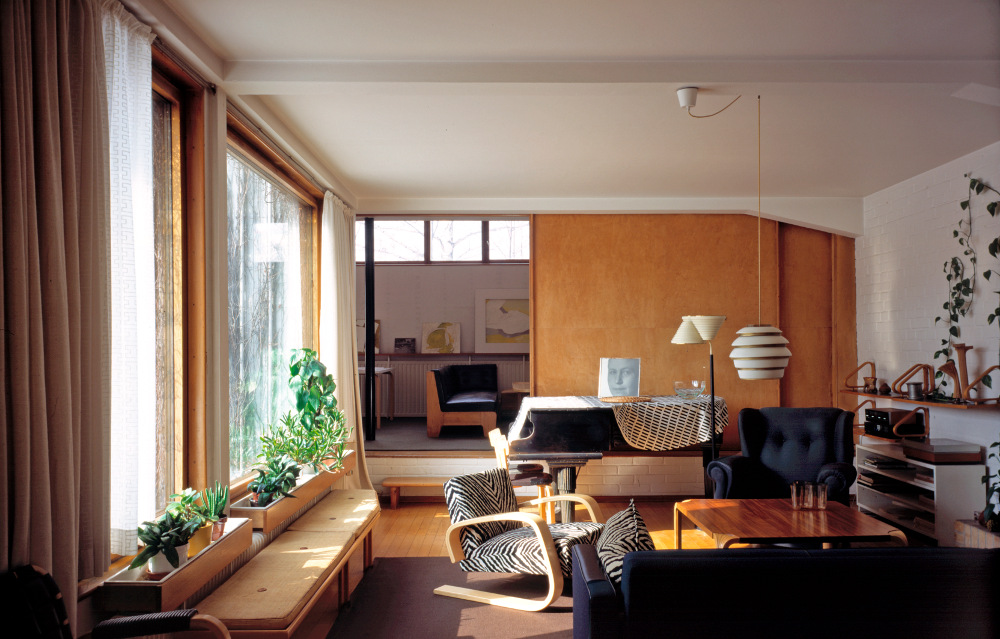
Visiting Helsinki is not unlike visiting Brasilia or Florence. Climate and cultural differences aside, these cities share a debt to the vision of designers and individuals whose influence is tangible around every corner. Just as the urban landscape of Brasilia is dominated by the sensual contours of civic buildings created by Brazilian architect Oscar Niemeyer, and any visit to Florence is incomplete without encountering the masterpieces of Michelangelo, Helsinki is imbued with the functional beauty of its most famous son: Alvar Aalto.
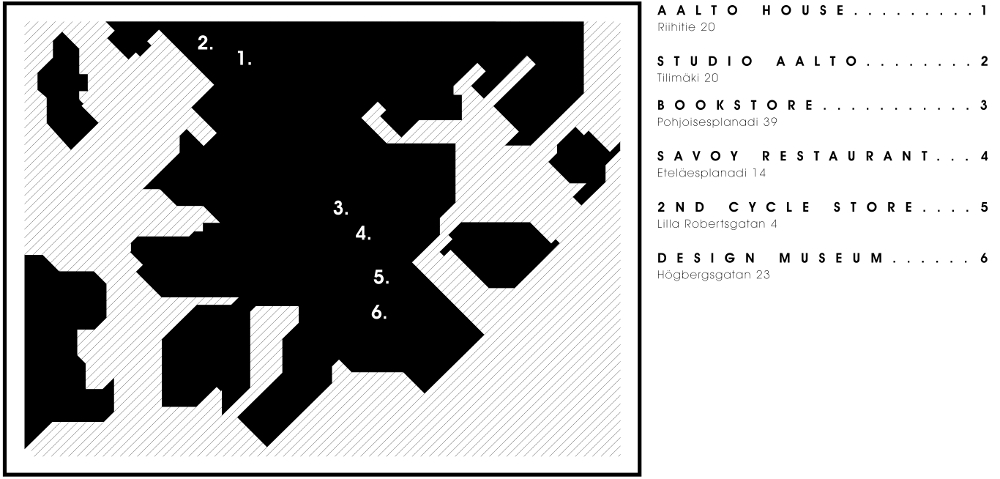
From the iceberg angles of Finlandia Hall to the ubiquitous curves of his iconic L-leg furniture, Aalto’s presence in the city is inescapable. Visiting the landmarks of Aalto’s life and work is to discover the principles of functionality, a devotion to natural materials and a minimalist beauty that have all helped characterise Scandinavian design since the 1920s, and continued to drive its popularity to this day.
Here, PORT visits the Finnish capital on the 80th anniversary of Artek – the design brand co-founded by Aalto in 1935 – to learn more about the history behind the iconic architect and designer, and to experience the subtle pleasures of one of Scandinavia’s lesser-known metropolises.

1. Any tour of Alvar Aalto’s Helsinki ought to begin at The Aalto House, a family home and working studio built by Aalto and his first wife, Aino, in 1936. Nestled in the residential neighbourhood of Munkkiniemi, the home is in largely the same condition as it was when Aalto lived here up until his death in 1976. The very fact that he inhabited this house for over 40 years speaks volumes about the philosophy that informed his attitude towards life and design. Never one for indulgence or over-embellishment, The Aalto House was constructed around ideas of comfortable functionality that would last for years. “Alvar could have built another house, but he was just happy with this,” explains architect Jonas Malmberg, while giving us a tour of the residence.
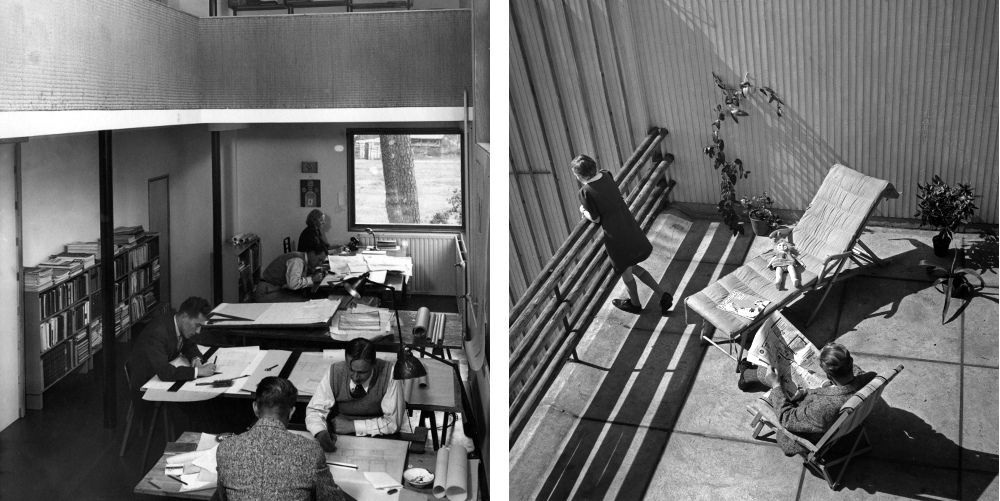
This said, the simple appearance of the house masks a complex, even experimental, structural framework that incorporates load-bearing brick walls, timber cladding, steel columns and a concrete structure supporting the ceiling – a mishmash of architectural ideas that is counterbalanced by the stylistic coherence of the building’s interior. As expected, wood dominates inside, from the living room floorboards through to the 1920s Italian dining chairs (purportedly bought on Alvar and Aino’s honeymoon) and the large sliding screen that separates the house’s domestic area from the studio space. The studio was the home of Aalto’s architectural practice from 1936 to 1955, until the gradual growth of the business rendered the space obsolete and the team was forced to move five minutes away to a new location named Studio Aalto.
“Alvar’s idea for a studio at The Aalto House represented an important change in ideas of workspace for an architect in the mid-30s,” explains Malmberg. “This is like an artist’s studio, with a large window facing north providing uniform light, whereas the newer space [at Studio Aalto] has windows on all sides to maximise the sunlight coming in.”
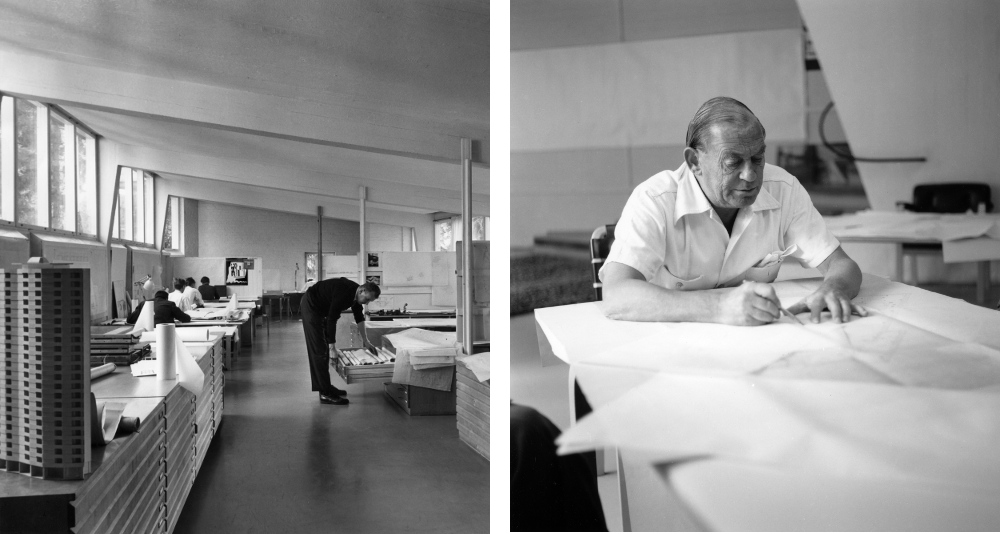
2. Studio Aalto is reminiscent of a modern architectural workspace with large desks, computer screens and scale models. Despite Aalto’s death in 1976, Studio Aalto remained as a working practice until the Alvar Aalto Foundation took over the building in 1994. A small group of architects still work there today maintaining Aalto’s built legacy, which includes nearly 200 major projects.
Like the Aalto House, Studio Aalto is experimental in its form. The only office in the nearby residential area, the building seems to, quite literally, turn its back on the neighbourhood, merely revealing a white wall to the street. Inside, the structure curves around a courtyard and amphitheatre (used for film screenings in Aalto’s day), revealing one of the crucial ideas behind the designer’s architectural practice.
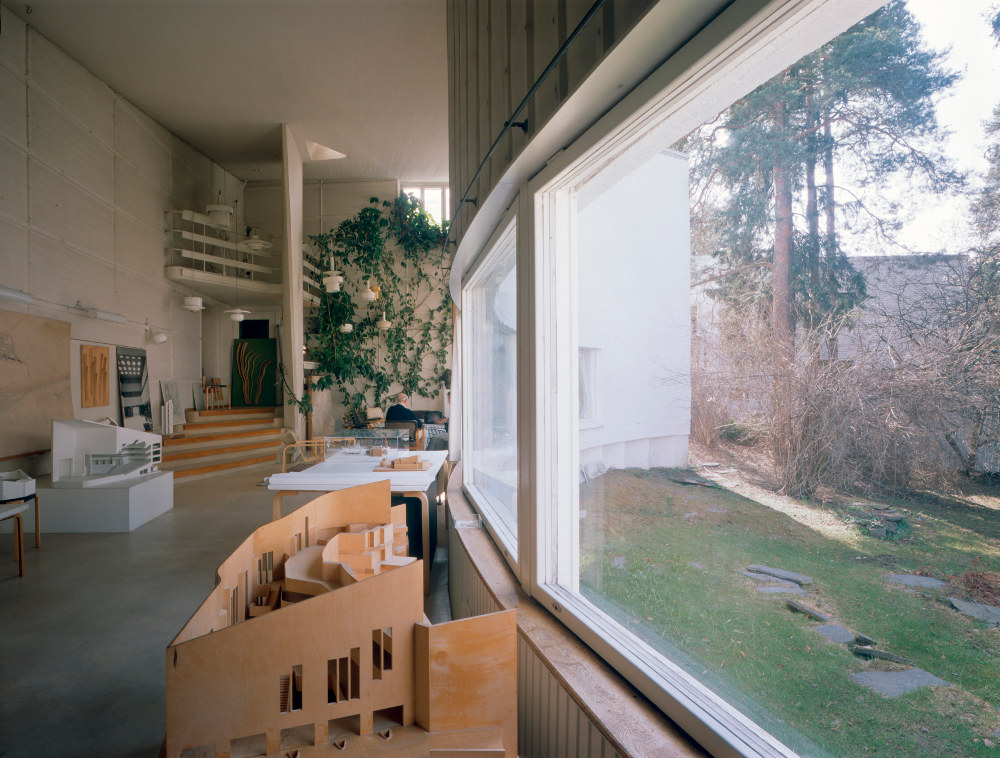
“One of Alvar’s principals was to never build on the best spot in the plot. He would leave that open and build around or beside it,” explains Tommi Lindh, director of the Alvar Aalto Foundation. “‘Don’t spoil the best spot’, he would say, ‘leave it open so you can admire it in the future’.”
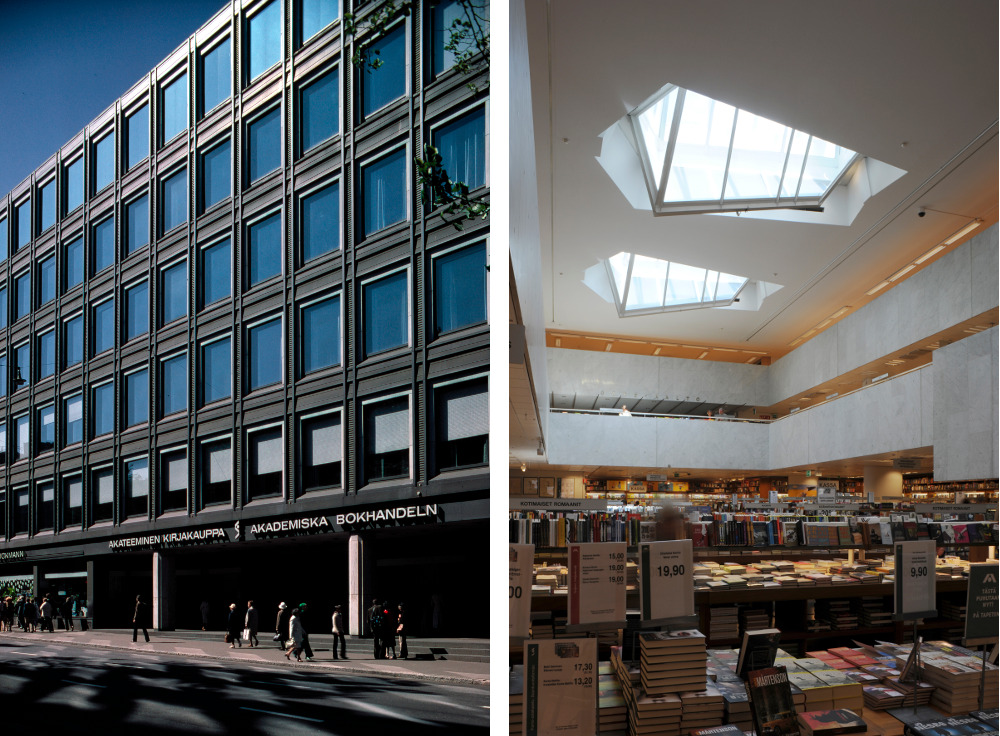
3. It is from this studio that Aalto designed some of his most celebrated works, including the Akateeminen Kirjakauppa (or Academic Bookstore) in the heart of Helsinki’s commercial district. Completed in 1969, the bookstore is fronted by a rectilinear shell of dark copper – a somewhat austere contrast to the atrium space of the bookshop’s ground floor, which is flanked by white marble staircases and sits below stunning, angular skylights. It is the largest bookshop in Helsinki and features an extensive English language books section, which contains work by Finnish writers.
The Academic Bookstore lies at one end of the Esplandi (esplanade), which consists of two major shopping strips full of essential Finnish design stores including Marimekko, Iittala and Aalto’s own Artek.
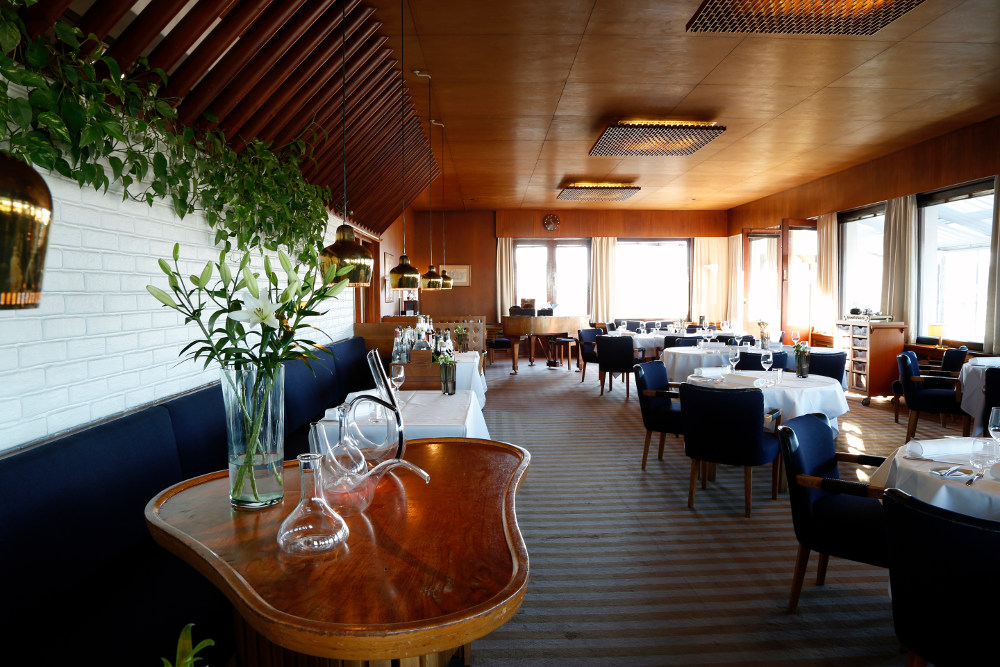
4. On the south side of the promenade, Ravintola Savoy (Savoy Restaurant) sits atop the Industrial Palace building, where it has overlooked the city since 1937. The bespoke furniture designed especially for the site by Aalto and his first wife Aino combined with the views over Helsinki make the Savoy a special site in itself. And that’s all before you taste the authentically Finnish menu by head chef Kari Aihinen, whose dishes include octopus carpaccio, fillet of deer and cloudberry pastries.
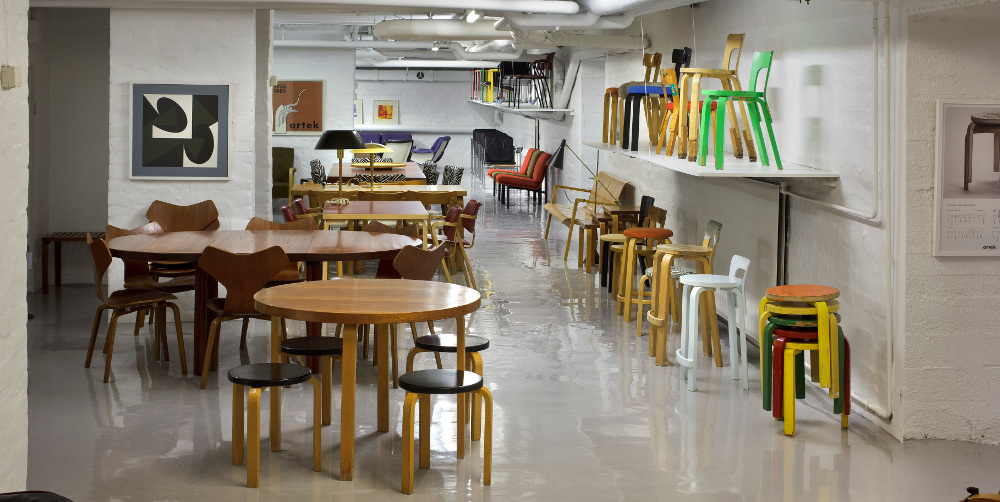
5. Another pit stop for furniture enthusiasts is Artek 2nd Cycle Store, a veritable Aladdin’s cave of vintage stools and armchairs. The store was set up in 2011 to refurbish and repurpose pre-owned pieces of furniture from Artek and other classic designers besides Aarto, including Ilmari Tapiovaara and Charles and Ray Eames.
“These products have been out in the world for nearly 80 years,” explains Juhani Lemmetti, one of 2nd Cycle’s team of furniture ‘hunters’. “They’ve been used in public buildings and private homes, and they’ve shared other people’s lives. But sometimes these buildings are changed or people move on, so why not give these products a second life?”
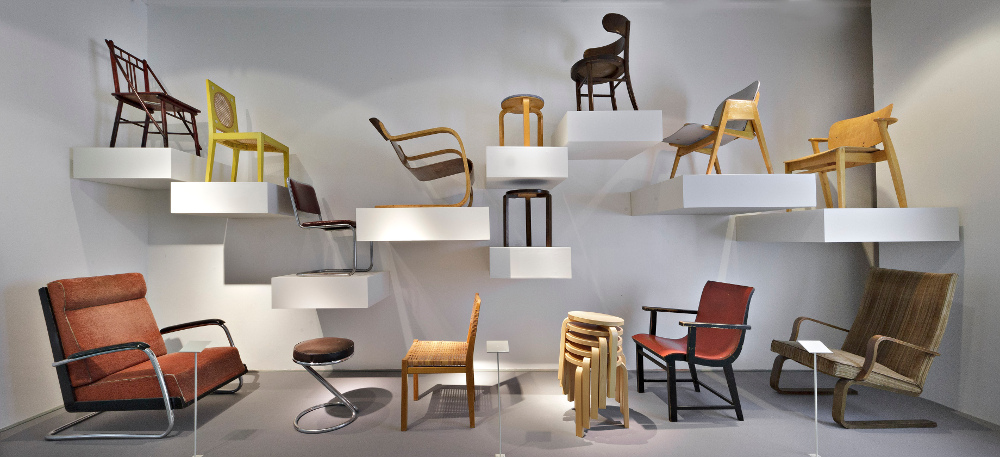
6. You don’t need to be an expert to appreciate the simple, lasting quality of Aalto’s designs. The iconic stool 60 (“a very important piece of furniture,” says Lemmetti) is a prime example of this. Stool 60’s three minimalist legs curve beneath a circular seat – a design that has remained unchanged since its conception in 1933.
The stool is among a number of other prominent Finnish furniture pieces that have made their way into the permanent collection at the city’s Designmuseo, alongside Tapiovaara’s Domus chair and Kaj Franck domestic products, which are now a ubiquitous part of Finnish life and, like Aalto’s buildings, the fabric of Helsinki.




